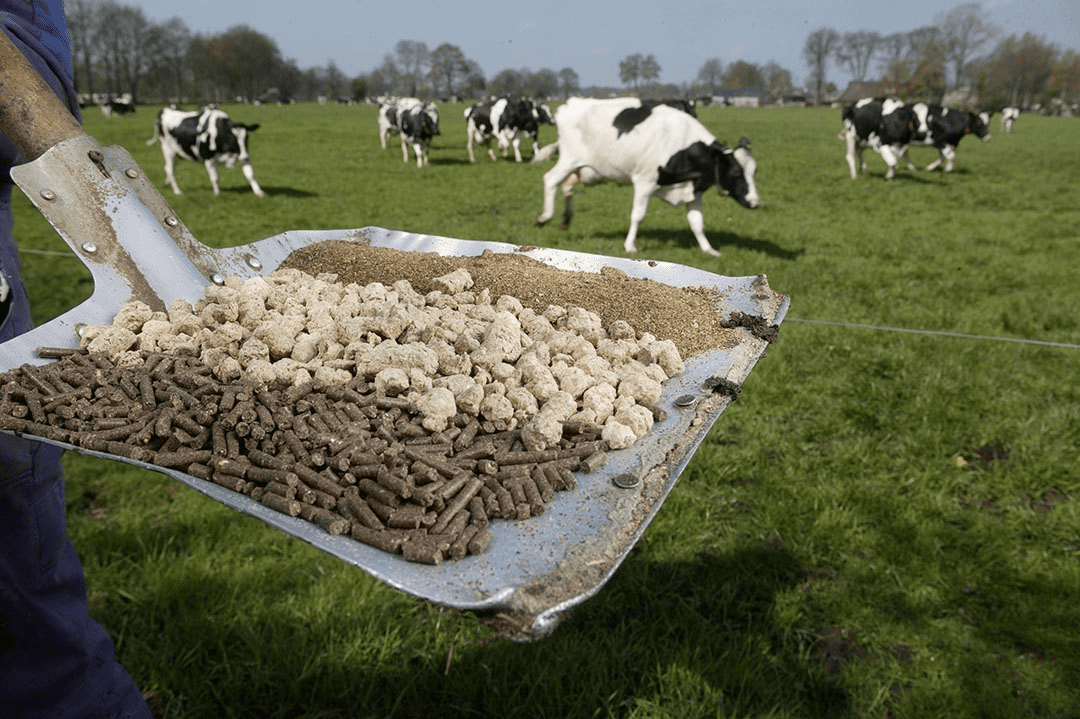Animal feed additives are substances, micro-organisms or preparations purposely added to animal feed or water. Vitamins and probiotics are two well-known examples of additives.
Animal feed additives meet the nutritional needs of animals and/or have a positive influence on (several options are possible):
– The properties of an animal feed;
– The properties of animal products;
– The colours of decorative fish and birds;
– The environmental impact of animal production;
– Animal production, performances or welfare (e.g. by acting on gastrointestinal flora or digestibility of animal feeds).
Additives are the non-nutritive substances usually added to basal feed in small quantity for the fortification in order to improve feed efficiency and productive performance of the animals. Some commonly used feed additives are as below:
1. Antibiotics e.g. Terramycin, Zinc bacitracin, Flavomycin etc.
2. Enzymes e.g. Amylase, lipase, protease, pepsin etc.
3. Hormones eg. Estrogen, progesterone, hexosterol etc.
4. Thyroprotein e.g. Iodinated casein.
5. Probiotics e.g. Microbial species. Lactobacillus.
6. Biostimulators e.g. Extracts of living organs like spleen, liver, ovary, chick embryo etc.
7. Antioxidants e.g. Vitamin E (Tocopherols), BHT ( Butylatedhydroxy toluene).
8. Mold inhibitors e.g. Propionic acid, acetic acid.
9. Pellet binderse.gGur, meal, molasses, sodium bentonite.
10. Coccidiostats e.g. Amprolsol powder, Furasol powder.
Animal feed additives may also be added for their coccidiostatic or histomonostatic effects (antibiotics other than coccidiostats or histomonostats are not allowed as additives).
Animal feed supplements consist of essential nutrients that are widely used for maintaining good health in animals. Feed supplements are rich in minerals, vitamins, carbohydrates, phosphorous and many more essential nutrients.
Animal feed supplements are expected to be completely safe to use and is free from side effects. These supplements stimulate the appetite and helps in improving the diet and growth of the animal.
Animal feed supplements are easy to consume and digest hence slowly improves the health of the animals. The supplements can also bring good immunity level and prevent them from various diseases.
Benefits of Animal Feed Supplements
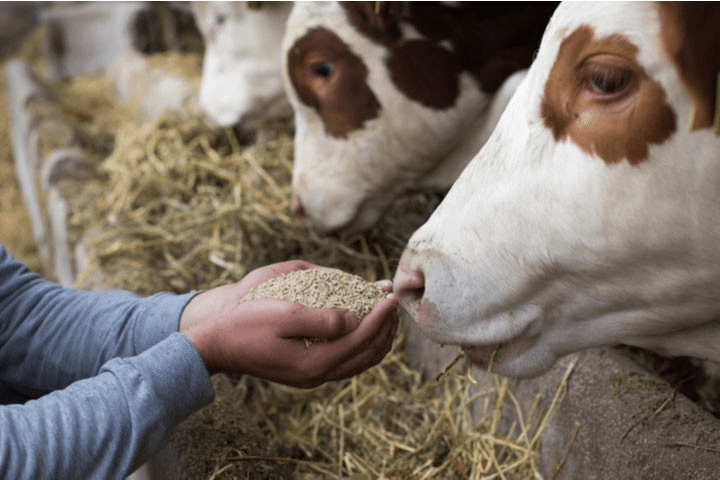
- These supplements are free from contaminants.
- Supplies nutrients to the animals.
- These animal feed supplements are free from side effects.
- Available in cost effective prices.
- Provides a healthy environment to the workers.
Feed supplements are the compounds used to improve the nutritional value of the basal feeds so as to take care of any deficiency. Commonly used feed supplements are
- Vitamin supplements e.g. Rovimix, Vitablend, Arovit etc.
- Mineral supplements e.g. Minimix, Milk min, Nutrimilk, Aromin etc.
1. Protein Supplement
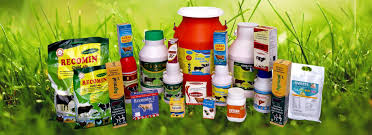
Feeds containing more than 20% protein or protein equivalent. High in nitrogen content. Highly digestible. Examples: soybean meal, cottonseed meal, linseed meal, peanut meal, meat meal, fish meal, feather meal, urea, brewer‘s grains.
Bloodmeal is dried blood from animal processing plants. Spray or ring dried bloodmeal is superior to batch dried because less heat damage occurs.
Read Also: Process of Making Animal Feed Protein Isolates and Concentrates
Bloodmeal is high in true protein, UIP and the amino acid lysine. Limit the amounts fed to less than 1 pound per cow per day and do not feed in diets high in moisture, as palatability can become a problem.
Brewer‘s grain, a by-product of the beer industry, is available dry or wet. Wet brewer‘s grains contain 70 to 80 percent water.
Feeding more than 20 percent of the ration DM or 40 to 50 pounds of wet feed per cow has been shown to reduce intake and milk production. On a DM basis, brewer‘s grains are high in protein and a fair source of energy.
Canola meal is relatively new high-protein supplement produced from the crushing of canola seeds for oil. New varieties of canola, previously called rapeseed, are low in goitrogenetic compounds. Canola meal can be substituted for soybean meal in diets.
Corn gluten meal is produced from wet milling of corn for starch and syrup. Two corn gluten meals are produced, a 40 percent and 60 percent CP supplement, with the 60 percent being the most common.
Both supplements are good sources of UIP. Energy content of corn gluten meal is only slightly less than corn grain. Limit amounts to 5 pounds per cow per day because of palatability problems.
Cottonseed meal is a high protein by-product from the extraction of oil from whole cottonseed. It is quite palatable, but may be variable in CP content.
Cottonseed meal and other cottonseed products can contain a toxic substance known as gossypol. Limit the total amount of cottonseed products in diets to 8 pounds per cow per day or less.
Distillers dried grains, with or without soluble, is a by-product of grain fermented for alcohol production.
Corn is the most common grain fermented, but other grains are used, and the composition of the distiller‘s grains will vary depending on grain source.
Dried distillers grains are moderate sources of CP (23 to 30 percent), but a good source of UIP if not heat damaged.
Feather meal is hydrolyzed poultry feathers. High quality feather meal is both high in CP (85 to 92 percent) content and digestibility, but low in several important amino acids.
Feather meal is rather unpalatable and should be introduced into diets gradually and limited to 1 to 1.5 pounds per head per day. Combinations of feather meal and blood meal are recommended for balanced amino acid supplementation.
Fishmeal is a by-product of the fish industry. It includes bones, head, trimmings, and fish parts. Quality can vary, depending on source and handling. Fish oil reduces fiber digestion in the rumen, and should be limited to 50 grams per day. Limit fish meal to 1 to 2 pounds per day.
Linseed meal is a product of the flax industry and is a good protein supplement (39 percent). It is very palatable and can be used as a replacement for soybean meal. Malt sprouts consist of dried sprouts and rootlets produced during the malting (sprouting) of barley for beer.
The feed is similar to dried brewers grain, especially in UIP, but bitter tasting, reducing palatability. Limit amounts in the diet to less than 5 pounds per cow per day or 20 percent of the grain mix.
Meat and bone meal is a rendered and dried product from animal tissue. It does not contain horn, hide, hair, manure, or stomach contents. Meat and bone meal is a good source of CP, UIP, calcium and phosphorus.
Limit amounts fed to 2.5 pounds or less per day. Meat and bone meal needs to be handled properly and stored in dry places to avoid salmonella contamination.
Soybeans are an excellent source of CP and fat (18 percent) for dairy cattle. Raw soybeans can be fed up to 5 pounds per cow per day. Cows should be adjusted to beans gradually to avoid diarrhea and off-feed.
Raw beans contain urease, an enzyme that releases ammonia from urea when soybeans and urea are mixed together. Urea and raw beans should not be mixed and stored together.
Microbial degradation in the rumen reduces anti-protein factors in raw beans (trypsin inhibitor, for example). Roasting, extruding, or other heat processing reduces anti-protein factors and urease activity.
Heating temperature (290 to 300 degrees F) and steeping time (30 to 45 minutes) must be carefully controlled to avoid under- or overheating soybeans. Heat-treated soybeans can be fed up to 8 pounds per day. Cost of processing, including bean shrinkage, should be evaluated.
Soybean meal is the most common and usually the most economical vegetable protein supplement. The most common soybean meal contains 44 percent CP as fed.
Two other sources of soybean meal are: dehulled soybean meal (48 percent CP), and expeller or old processed soybean meal (42 percent CP and 5 percent fat). Many commercial supplements contain substantial amounts of soybean meal.
Sunflower meal protein supplements range from 28 to 45 percent protein. The protein percentage varies inversely with fiber percentage: lower protein, higher fiber.
Sunflower meal is a good source of protein and phosphorus. Palatability problems have been observed in some herds when sunflower meal is top-dressed.
Urea is a NPN compound containing about 46 percent N. It has a protein equivalent of 287 percent (46 percent N x 6.25). It is a good source of SIP.
Urea fits best in diets high in carbohydrate energy (grains and corn silage), low in protein, and low in SIP. Limit amounts fed to .4 pounds per cow per day, 1 percent in grain mixes, or 0.5 percent in corn silage (10 lb/ton added at ensiling).
If urea or another NPN source like ammonia is added to corn silage, the amount of urea included in a grain mix should be reduced so that the intake of urea or urea equivalency does not exceed the maximum of 4 pounds per cow per day.
Urea is not a palatable feed and should be mixed thoroughly into the grain mix or silage. Urea is best utilized when incorporated into total mixed rations (TMR) and/or fed frequently in mixtures with other feeds.
2. Minerals
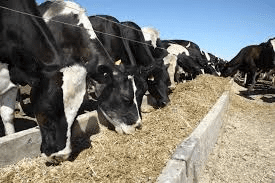
Minerals are essential for optimum health for all living species. Requirements differ from one species to the next, but they all need adequate amounts of each mineral for healthy bodily functions.
Mineral deficiencies can lead to disease and so can mineral excesses. So getting the correct amount in the right ratios is the key to optimum health.
Most natural diets will provide these minerals in appropriate balances, but with commercially prepared diets, this can cause imbalances.
Most farmers know of the importance of adequate mineral levels in their livestock. They can see the benefits to their health when mineral licks are placed out for stock to take. Better health is visible when these extra minerals are provided.
Symptoms of mineral deficiencies may show up as rough, harsh coat, flaky skin, eating dirt, poor growth, recurring disease, fence chewing, de-barking trees, unhealthy skin, tooth decay and much more.
These minerals are divided into two groups,
1. Macro minerals – Many elements are essential in relative quantity; they are usually called “bulk minerals”. Some are structural, but many play a role as electrolytes .They include, calcium, sodium, potassium phosphorus etc.
2. Traceminerals– Many elements are required in trace amounts, usually because they play a catalytic role in enzymes .they include, cobalt, copper, manganese, iron etc.
Of the macro minerals, only NaCl, Ca, and P routinely added to livestock rations.
Trace minerals most likely to be deficient: Cu, Fe, I, Mn, Zn, C, and Se. Providing mineral supplements to animals: self-fed (most common). Incorporate into diet Commercial mineral mixtures.
Frequently do not meet the needs when used (One size does not fit all.)Often have excesses of some minerals but deficient in others but most people do not have the equipment (or knowledge) to mix minerals properly. May interrelationships among minerals. Commercial mix usually best.
Read Also: Process of Making Roughages as an Animal Feedstuff
3. Vitamins
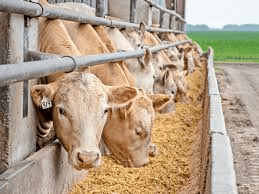
As with the minerals discussed above, some vitamins are recognized as essential nutrients, necessary in the diet for good health. (Vitamin D is the exception: it can alternatively be synthesized in the skin, in the presence of UVB radiation).
Certain vitamin-like compounds that are recommended in the diet, such as carnitine, are thought useful for survival and health, but these are not “essential” dietary nutrients because the human body has some capacity to produce them from other compounds.
Moreover, thousands of different phytochemicals have recently been discovered in food (particularly in fresh vegetables), which may have desirable properties including antioxidant activity (see below); experimental demonstration has been suggestive but inconclusive.
Other essential nutrients not classed as vitamins include essential amino acids, choline, essential fatty acids, and the minerals.
Vitamin deficiencies may result in disease conditions: goitre, scurvy, osteoporosis , impaired immune system, disorders of cell metabolism , certain forms of cancer, symptoms of premature aging, and poor psychological health (including eating disorders ), among many others.
Excess of some vitamins is also dangerous to health (notably vitamin A), and animal nutrition researchers have managed to establish safe levels for some common companion animals.
For at least one vitamin, B6, toxicity begins at levels not far above the required amount. Deficiency or excess of minerals can also have serious health consequences.
Vitamins required in minute amounts. Feed content varies. Affected by species, part of plant, harvesting, storage, processing. Easily destroyed by heat, sunlight, oxidation, mold growth.
Ruminants – Rumen microorganisms synthesize K, C, and the B vitamins.
Swine – Main concern for Vitamins A, D, E, riboflavin, niacin, pantothenic acid, B12, and choline.
Horses – Not much research data. Vitamin A -No problem with green grass and good quality hay, otherwise supplementation advised. Vitamin D-Supplement if horse kept indoors or sunlight erratic.
Vitamin E – No problem with fresh forages and quality hay. Grains are low. Vitamins C and K synthesized by cecal microorganisms.
B vitamins – Normally not needed as in ruminants. Riboflavin and niacin suggested for horses under stress or heavy work.
4. Additives
Additive is an ingredient or combination of ingredients added to the basic feed mix or arts thereof to fulfil a specific need. Usually used in micro quantities and requires careful handling and mixing (AAFCO, 2000).
Non-nutritive substances which when added to feed will improve feed efficiency and or production of animals. Examples: Ionophores (Rumensin, Bovatec), Bloat control (poloxalene), Anthelmintics, Drugs / Antibiotics, Hormones, Flavoring agents.
Read Also: The Different Types of Fertilizers and How they Work

